Indigenised to decolonise is about the spread of Methodism through personal encounter with the Gospel of Jesus Christ. Indigenised to decolonise beyond critical biblical scholarship is a renewing biblical scholarship with an eye to human transformation. Beyond ‘the current situation in which the theologies produced in the West dictate the goals, tasks, and methods of Christian studies in the non-Western world,’ indigenised to decolonise is ‘to emphasize the necessity for local Christians to initiate a reorientation of the way we conduct theological studies in a specific locality.’[1] Indigenised to decolonise not only challenges mere ‘cognitive understanding of the Christian truth based on scientific, rational, and historical studies,’ it is to help in achieving ‘personal religious/spiritual transformation.’ Indigenised to decolonise revolves around Methodists personal and corporate renewal.
There is a shift in the centre of Methodism gravity just as ‘a shift in the center of Christian gravity from the West to the non-Western world.’ The spread of Methodism resonates with the expression of Christian faith in the world which ‘has been serial … a previous center of Christian gravity became a periphery, and a periphery emerged as a new center.’[2] Emergence of new center of Methodism gravity has resulted in Methodism crossing the cultural frontiers, with the Scriptural faith, Doctrine, Discipline, and Spirit of the Wesleys living still. Indigenised to decolonise is about the emergence of new form of theology ‘in the process of the encounter between the Gospel and the thought-world of the non-Western people,’ and according to Walls, “the future of Christian theology and theological scholarship as a whole’ depend on that encounter. Indigenised to decolonise points to a long tradition of missionary work of the Moravian movement that developed into the Moravian Church. Indigenised to decolonise as the centrality of lay leadership to a healthy church calls Methodism into a continuous uninterrupted prayers and sending of missionaries.
The ministry and labour of a Methodist foremost missionary, Thomas Freeman in Nigeria was not in vain. Beyond Freeman’s mission landmark at Badagry, Nigerian Methodism spread in Eastern Nigeria through the Primitive Methodist Missionaries (PMMS) who arrived in Archibong. The Primitive Methodist Connexion was formed in 1811 by Bourne and William Clowes. The early PMMS missionaries to Easter Nigeria included Rev Henry Roe, Rev R W Burnett, Rev William Christie, Rev Frederick Dodds, Rev William R Norcross and Rev R Barham.[3] The two societies, the Wesleyan Methodist Missionary Society and the Primitive Methodist Missionary Society united in 1932 as a result of the union of their home churches in England. The pressure and agitation in Nigeria for political independence in the 1950s crept into the church, especially Nigerian Methodism. This led to the movement towards Nigerian Methodism’s autonomy from British Methodism.[4] Towards the end of 1961, all matters were resolved and the Methodist Church Nigeria emerged as an autonomous body of Christ. The chairman of the Western Nigeria District Synod, Rev. E. J Jones handed over the leadership to the Rev. J. O. E. Soremekun on September 28, 1962.
Since 1962, the leadership in Nigerian Methodism has experienced cycles of presidential and Episcopal leadership, Nigeria civil war, Methodist crises, reconciliation and reorganization. The leadership development in Nigerian Methodism can be traced into four periods based on the five constitutions promulgated by the church between 1962 and 2007.[5]
In 1962, Rev. Soremekun became the first President, with a lay member, Dr. Moma as Vice-President. The autonomy of the church did not change the original structure of the church leadership inherited from the British Conference. The constitution was so patterned that the President had to change hands every year but could be elected for five years through ballot.[6] Familusi explained that the Constitution and the Standing Order contained more of the Committees and different orders and forms of business. The Nigerian civil war was an unpleasant milestone in the history of Nigeria. The Presidency of the Methodist Church as stipulated in the Constitution was to change in 1967, but there were difficulties in contacting people from the East. His Eminence Makinde described the Nigeria civil war as a major set back to Nigerian Methodism.[7] Communications between the West and the East came to a standstill until January 1970 when the war ended.
On 4 October, 1972, Rev. Professor Bolaji ldowu was elected president and his times as president between 1972 and 1975, and Patriarch from 1976 to 1984 were the most eventful in the history of Nigerian Methodism.[8] Idowu, during his service of investiture and consecration on 20 January 1973, expressed the need to review the inherited constitution in a way to reflect and emphasis indigenization of Nigerian Methodism.[9] To Idowu, indigenization was a task of ‘reordering the life of the church in such a way as to enhance effective and adequate ministration to the needs of the people in their native context.’[10] The indigenization of the Bible and Methodism hymns in Nigeria remains an important heritage for denominations in Nigeria. Indigenisation in the Nigerian Methodist context is Bible based and express in languages ‘filled with wisdom that sometimes cannot be translated or even worded in other languages; therefore, if the English Bible, is itself, filled with translations of other translations, then there is no reason for non-Western Christians to read and speak in strange idioms making “language evangelism” and devotion somewhat unintelligible and unnatural to their beings. If the Western church cannot speak in clear accents for all Christian people, then certain theological concepts and insights must be conveyed to hearers in their own appropriate linguistic vehicles, if they are to properly understand the Christian faith.’[11]
Indigenisation to decolonise reveals Methodism switch over to the local language and culture as medium of mission and evangelism. Language as a very missional essential coupled with the daily lives of people, is not only used a a tool for communication, education, social integration and development. Language is a repository for each person’s unique identity, cultural history, traditions and memory. Language, especially in the developing nations continue to disappear at an alarming rate. Indigenise to decolonise raises awareness on the benefit of indigenous language and religious expression of people who speak these local languages.
Idowu’s idea of Methodist indigenisation led to the 1974 Asaba Retreat on thorough review of the liturgy and church reconciliation, where ldowu emphasised the need for Nigerian Methodism to adopt an episcopal system of church leadership.[12] The introduction of episcopacy was with some Eastern Orthodox Church formats. Methodist episcopacy as a corporate episcopacy, a sharing of mission responsibility and connecting God’s people is in the context of the Holy Scripture.
A new Nigerian Methodist Constitution was introduced at the 13th annual conference of the church in 1974, with the ecclesiastical traditional title of Deacons, Priests, Presbyters, Bishop, Archbishop and Patriarch.[14] The new Constitution was passed at the Calabar Conference in 1975. The President was unanimously elected the Patriarch. The Conference was divided into four archdioceses and the Archbishops were named. The dioceses were delimitated and the Bishops, with the corresponding Lay President, were also elected.[15] On January 20, 1976, generally referred to as The Appointed Day, the Patriarch, Archbishops and Bishops were invested and consecrated,[16] but crisis later followed the adoption of the new constitution; the church broke into two factions.
At the Otukpo conference in 1984, the ministerial session retired His Pre-Eminence Bolaji Idowu and elected his chaplain Rt. Rev. Sunday Mbang to succeed him. Archbishop Amos Omodunbi narrated that, under the new leadership, in the 1990 reconciliatory constitution by the two factions of the church, the Patriarchal title was dropped and the church adopted the Prelate title. The period between 1990 and 2006 is described as a season of Nigeria Methodist consummation especially, with the 3‘RS’ – Reconciliation, Reorganization and Revival, introduced by His Eminence Mbang. Nigerian Methodism has evolved, and grown from 8 districts between 1962 -1976, 4 archdioceses and 19 dioceses; between 1976 –1991, and 9 archdioceses and 42 dioceses; between 1991- 2006; 18 archdioceses and 81 dioceses; between 1991- 2021. The 2021 Methodist Revised Constitution is focusing on Methodist repositioning, which is total mission and evangelism.
[1] Lee, Moonjang, “Re-Configuration of Western Theology in Asia,” Common Ground Journal 6, no. 2 (2009); p. 79
[2] Walls, Andrew, “Rethinking Mission: New Direction for a New Century,” Mission and Theology 8 (2001), p. 257
[3] Ayika, Francis; Chinonyerem, Ekebusi C, A Hundred Years of Methodism in Easter Nigeria (1910-2010): Genesis and Growth (Umuahia: Soul winners Publication, 2010), pp. v-vi
[4] Familusi, Methodism, p. 111-113
[5] Okegbile Deji, Missional Leadership for Repositioning Nigerian Methodism (Lagos: Alex Inspirastioz, 2019), pp 5-6
[6] Familusi, Methodism, p. 123
[7] Okegbile, Missional Leadership, p. 6
[8] Okegbile, Missional Leadership, p. 6
[9] Familusi, Methodism, p. 9
[10] Okpo, A Brief, p. 28
[11] Idowu, Towards an Indigenous Church, pp. 15-20
[12] Archbishop Ebere O. Nze, ‘Encouraging the Heart,’ in NOW Methodist Church Overseas Division, London, February 1988, p. 9
[14] Methodist Church Nigeria, Constitution (Lagos: Methodist Church, 1976), pp. 4-9
[15] Familusi, Methodism, p. 152
[16] Methodist Church Nigeria, Constitution (Lagos: Negro, 2006), pp. 166-170

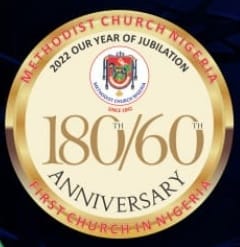
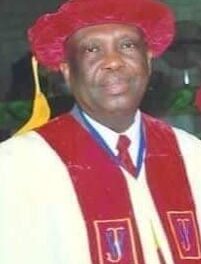
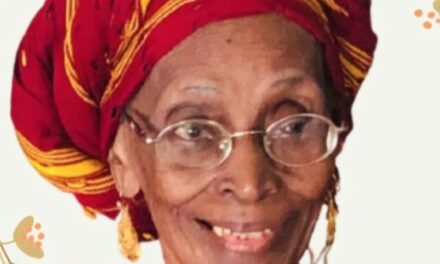




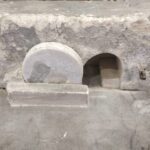

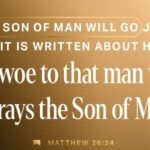
Recent Comments